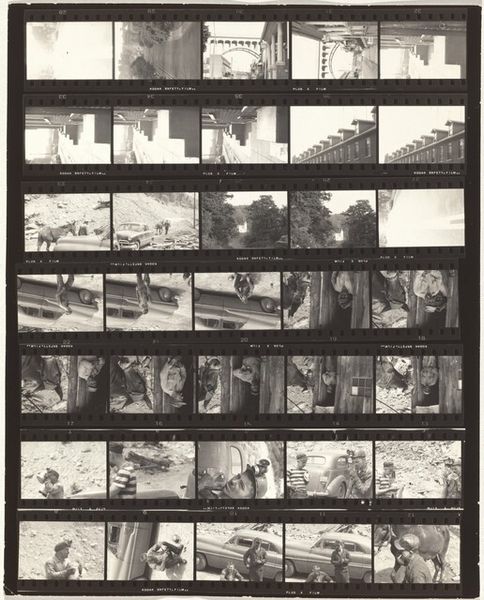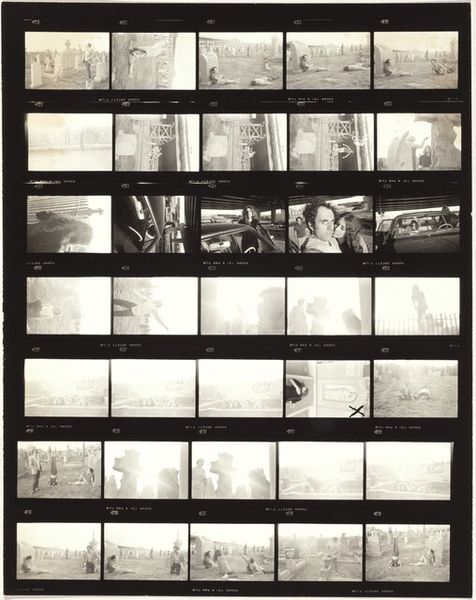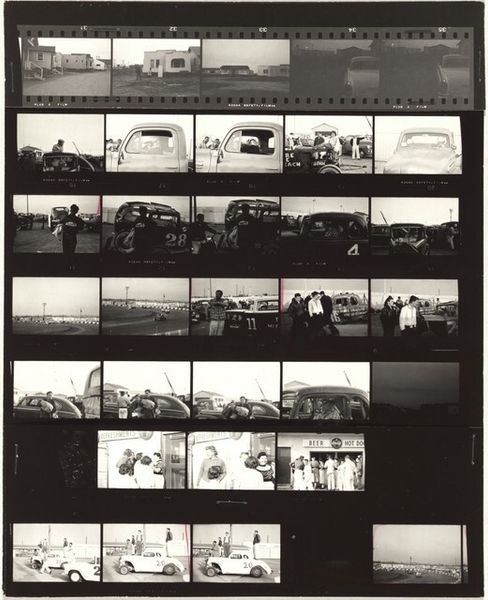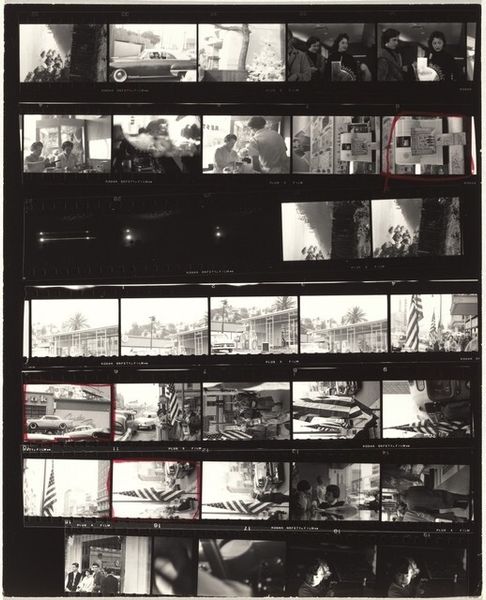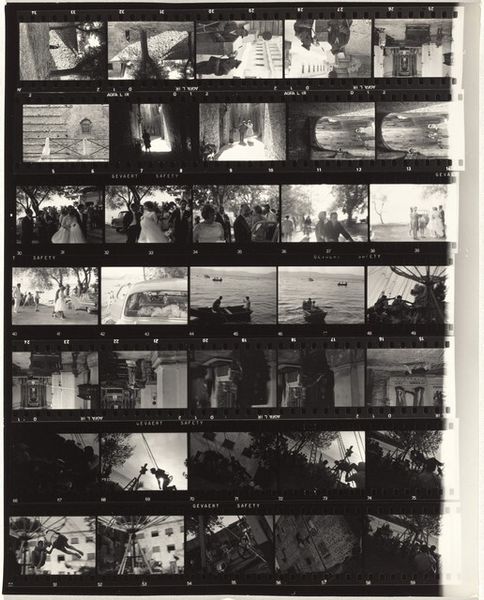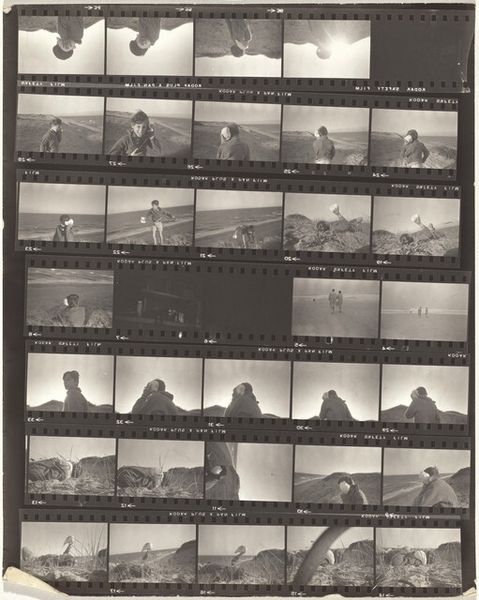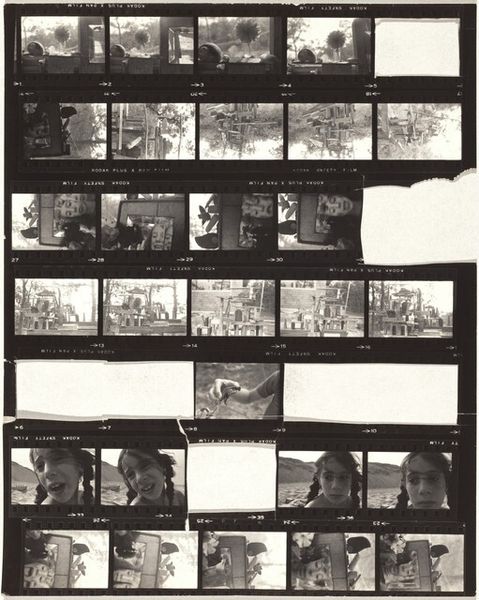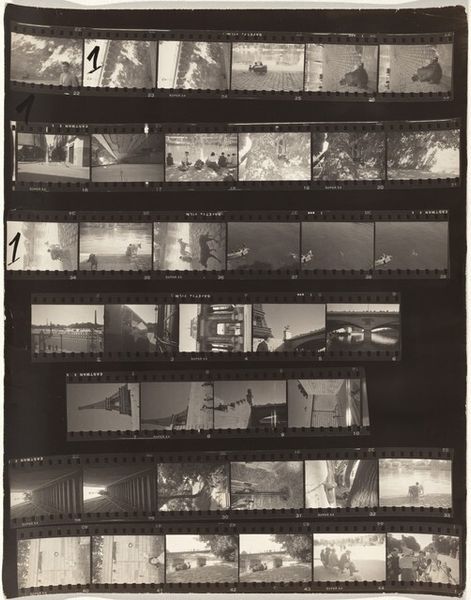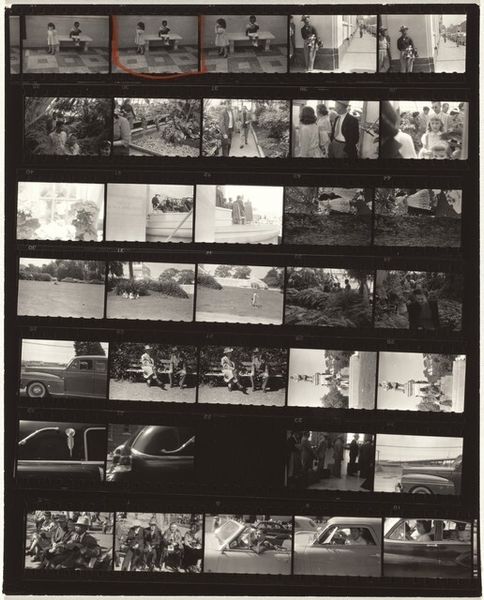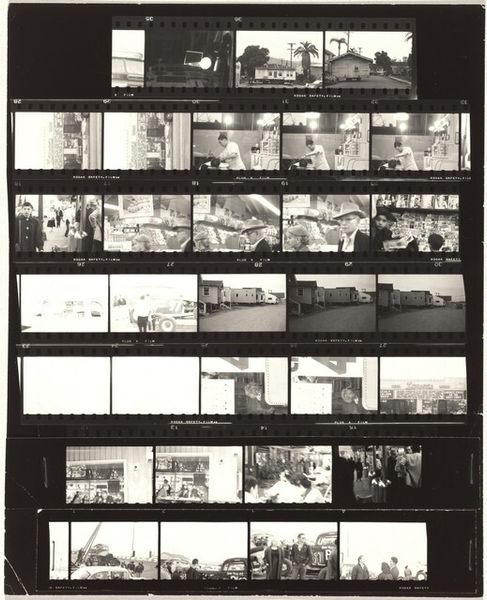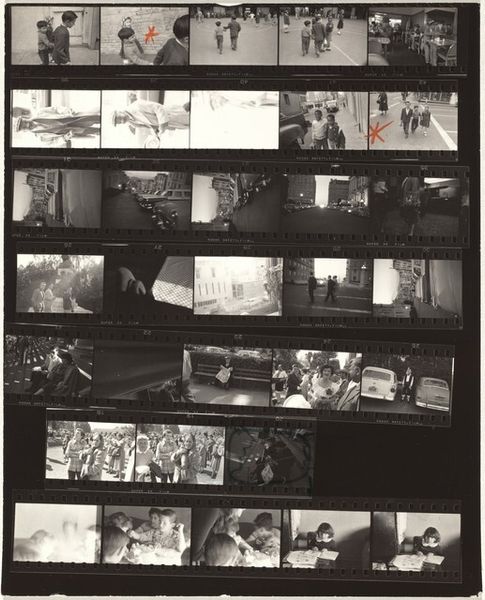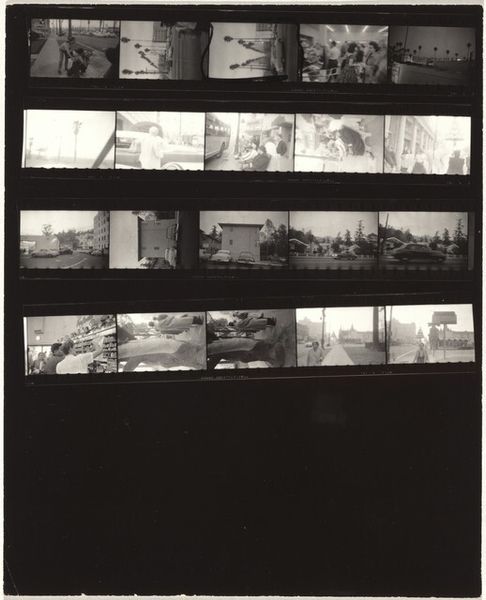
Guggenheim 556--Stock car races, Palm Springs, California 26 - 1956
0:00
0:00
photography, gelatin-silver-print
#
landscape
#
street-photography
#
photography
#
gelatin-silver-print
#
monochrome photography
#
pop-art
#
modernism
#
monochrome
Dimensions: overall: 25.3 x 20.4 cm (9 15/16 x 8 1/16 in.)
Copyright: National Gallery of Art: CC0 1.0
Curator: We're looking at Robert Frank's "Guggenheim 556--Stock car races, Palm Springs, California," captured in 1956. This gelatin silver print presents a contact sheet format. Editor: Wow, the way the light bleeds through some of these frames is like looking back through a heatwave. It feels chaotic and exhilarating all at once, like speed itself has been imprinted on the film. Curator: Indeed. Frank’s decision to showcase the entire roll allows us to appreciate the sequencing of his vision, his method of capturing a moment from various angles, as we see repeated themes across this work. Editor: The way it jumps from quiet moments to what looks like the intense heat of a pit stop is fascinating. And then there are frames where everything seems a blur. The high contrast and the way he sometimes seems to almost overexpose gives it all such a raw, immediate feel. What do you make of his choices in representing such scenes? Curator: It’s less a documentary endeavor, wouldn’t you agree, and more of an interpretive act? Each frame carries an allegorical charge within this structural ordering, presenting not the "truth" of a moment, but Frank’s perception. Note the composition itself rejects conventions of classical framing. The repetition across this grid gives visual insight into a certain kind of frenzy, but also its relation to routine. Editor: Definitely not your pristine landscape photo. This evokes something about 1950s America –the restlessness and the raw power simmering under a shiny veneer. It makes you question whether you’re celebrating something beautiful or documenting something destructive. Curator: Frank’s brilliance lies precisely in that duality, no? The beautiful ruin is one way to conceive it. And through the grid of contact prints, one experiences that moment through the lens of film's materiality. It's this structural interplay that defines Frank's unique vision. Editor: I see what you mean. It's the structure giving voice to his particular kind of poetry, like verses of asphalt, light, and fleeting time. This image lingers; you walk away thinking of the man with the camera as much as you think of the stock cars in Palm Springs. Curator: Precisely. It speaks less about racing culture and more to the visual conditions through which a given time is archived and perceived.
Comments
No comments
Be the first to comment and join the conversation on the ultimate creative platform.
